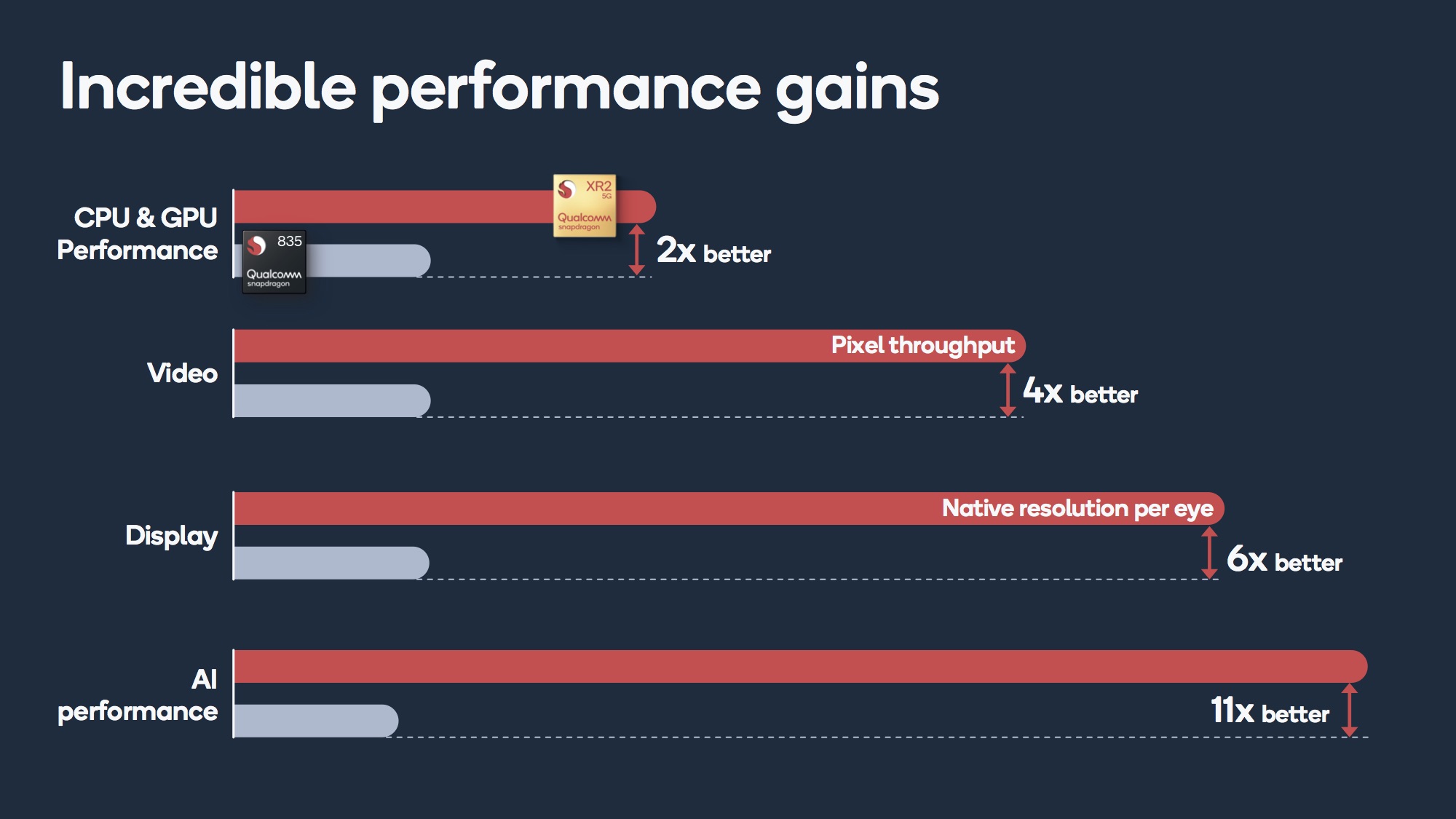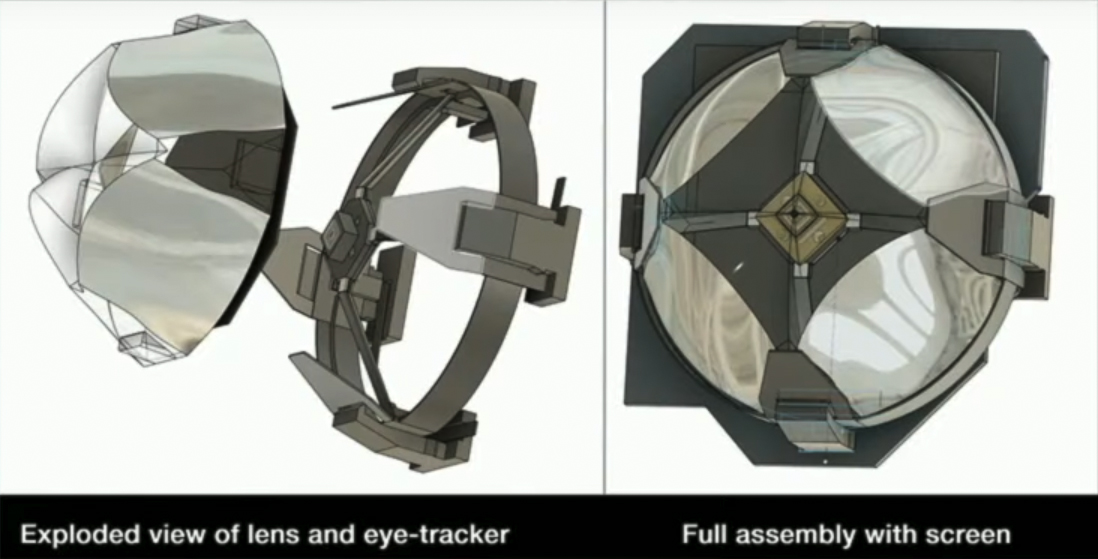In Augmented Reality, Virtual Reality and Mixed Reality News
February 4, 2020 – Yesterday at Photonics West 2020, French startup, Lynx, announced the launch of its new standalone mixed reality headset – the Lynx R-1.
The R-1, which is powered by the Qualcomm Snapdragon XR2 chipset, is primarily aimed at enterprise usage and is capable of both virtual and augmented reality immersion. Lynx has been working with Qualcomm for the last six months to integrate the XR2 chipset into its hardware, and the company is preparing for the R-1 to be the first XR device that ships with the XR2 on board, according to Stan Larroque, CEO at Lynx. Compared with other devices that utilize Qualcomm’s Snapdragon 835 chipset, the XR2 offers substantial performance gains:

In terms of the design and specifications, the R-1 is slightly different to other VR headset offerings currently on the market, in that it doesn’t use a fresnel lens or a bi-convex lens. Instead, Lynx is opting to use a ‘4-fold catadioptric freeform prism’. In the context of virtual reality usage, this is not only a lens, but in fact a full optoelectronic system, which includes eye-tracking hardware within the prism itself.

There are four elements to the display optics, with a ‘microlens’ being at the center. This is where the eye-tracking hardware is hidden – right in plain sight so to speak. The prism therefore actually displays four images, however the user only sees one single image. Some pixels at the center of these four images are also duplicated on the screen, allowing for super-sampling at the center of the image, as well as along the four borders between images.

As a result, the R-1 offers a 90° field of view (FoV) with 18 pixels per degree (PPD) on two 1,600 x 1,600 LCD panels running at a refresh rate of 90Hz. The R-1 also features on board-cameras, and it is these that enable the device to offer augmented reality experiences by way of AR passthrough, wherein a live image feed of a user’s surroundings are projected onto the headset’s display, and augmented elements are overlaid on top of this feed. Other design features include the location of the battery pack at the rear of the headset, to provide improved comfort due to a more even weight distribution of the device.
Talking in a product announcement speech at Photonics West, Lynx CEO, Stan Larroque, commented: “The kind of device we are bringing to the market is fully ready for the B2B market”, adding, “Every industrial company I talked to, they already have a use case for our device”. Larroque also noted that the best use cases he has seen to date for the R-1 include applications for surgery, and also gaming. However, he anticipates that the biggest market share will be with industry, and stated that the R-1 will be an alternative to the Microsoft HoloLens, as it offers some use cases that the HoloLens does not.
You can in fact see some similarities between the R-1 and the HoloLens, in that the R-1 also has a flip-up design, allowing the wearer to quickly switch between immersive experiences and real life – although, presumably a passthrough feature would also accomplish the same goal. Other features of the R-1 include:
Sensors
Positional tracking – 2 B&W cameras
Eye tracking – 2 IR cameras
RGB Cameras – 2 visible light cameras
Inertial Measurement Unit (IMU) – Accelerometer, gyroscope, magnetometer
Audio
Speakers – 2 stero speakers
Microphone array – 2 channels
Tracking
6DoF tracking – SLAM with world anchors
Hand tracking – Two-handed gesture recognition
Eye tracking – Low latency tracking
Processing System
SoC – Qualcomm Snapdragon XR2
Memory – 6GB LPDDR5
Storage – 128GB
Connectivity
Wi-Fi 6 (802.11ax)
Bluetooth 5.0
USB type C
The Lynx R-1 will be available in summer 2020, and will cost USD $1,500. Preorders are available today, and require a USD $150 deposit. Larroque has expressed interest in partnering with games studios, with one big name partnership apparently already confirmed by Lynx. More info on this will be announced in the summer, according to the CEO.
Video & image credit: Lynx/YouTube/Qualcomm
About the author
Sam is the Founder and Managing Editor of Auganix. With a background in research and report writing, he has been covering XR industry news for the past seven years.




